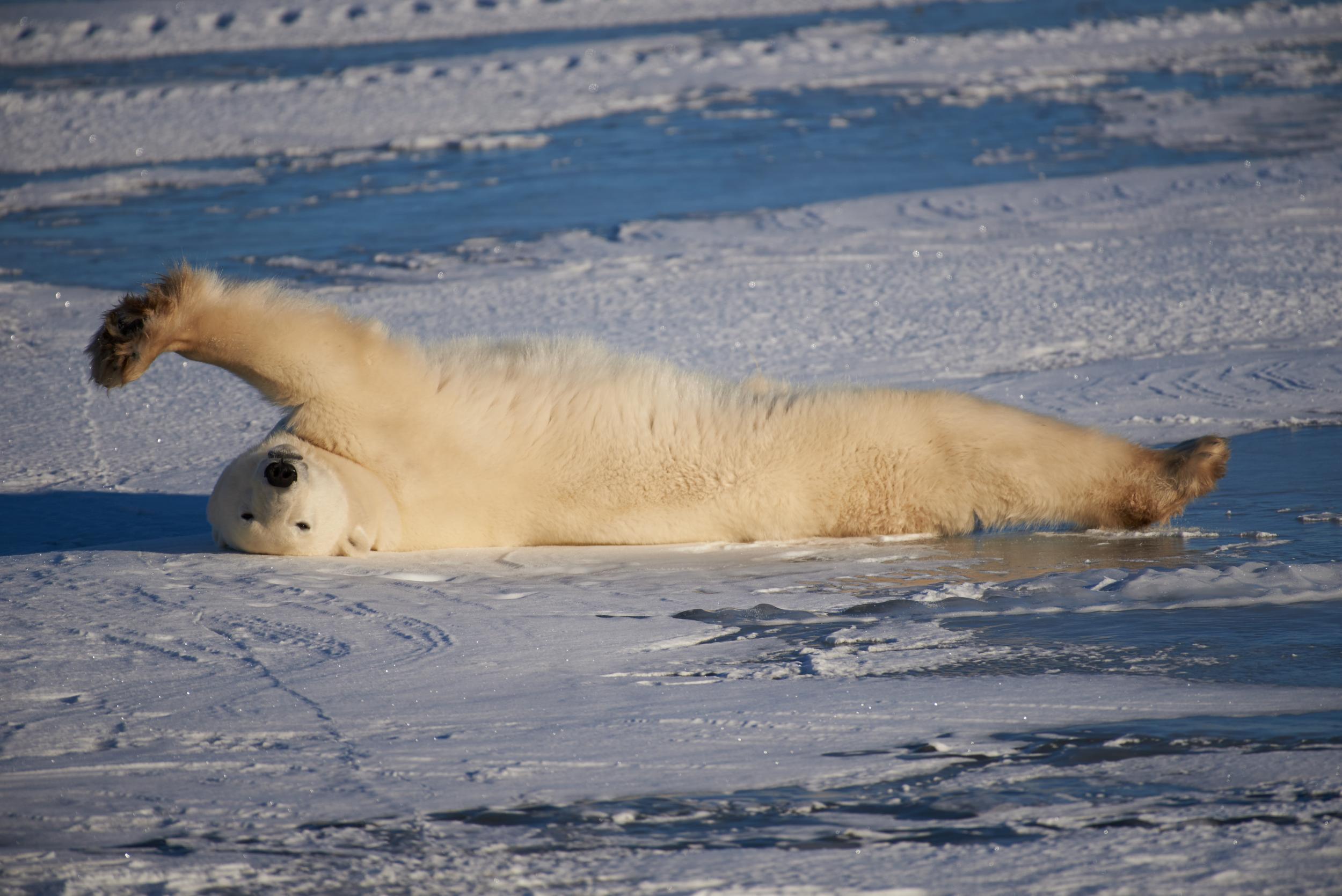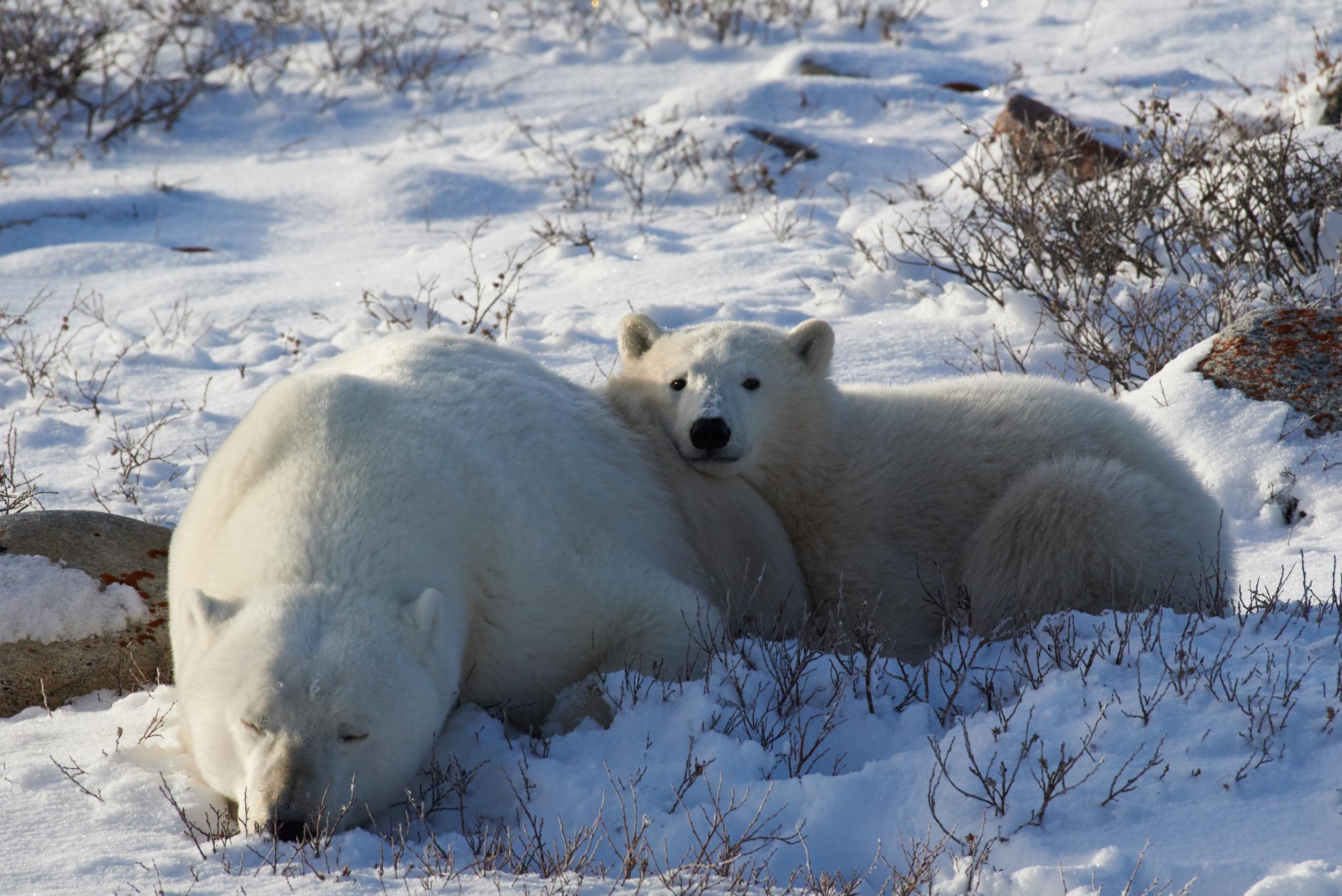Inside Churchill, Canada's polar bear town
As its lifeblood train line swings back into action, Lizzie Pook heads to Churchill in Canada – polar bear capital of the world – to see what life is like when you live alongside giants

Your support helps us to tell the story
From reproductive rights to climate change to Big Tech, The Independent is on the ground when the story is developing. Whether it's investigating the financials of Elon Musk's pro-Trump PAC or producing our latest documentary, 'The A Word', which shines a light on the American women fighting for reproductive rights, we know how important it is to parse out the facts from the messaging.
At such a critical moment in US history, we need reporters on the ground. Your donation allows us to keep sending journalists to speak to both sides of the story.
The Independent is trusted by Americans across the entire political spectrum. And unlike many other quality news outlets, we choose not to lock Americans out of our reporting and analysis with paywalls. We believe quality journalism should be available to everyone, paid for by those who can afford it.
Your support makes all the difference.The photograph in front of me clearly shows a man riding on the back of a whale. I blink. Rub my eyes. Look again. He’s still there: a man, clinging to the body of a white whale, as it lurches and thrashes between his legs.
This is typical Churchill. Everybody in this remote Canadian town has a bizarre story to tell, whether it’s champion dog musher Dave Daley telling me about the time he crashed through the ice – sled dogs and all – during a tundra race; or fur trapper Stanley Spence recounting, with deadpan intonation, his short-lived career capturing beluga whales “bareback” in the middle of the Arctic Ocean.
This is no ordinary town. Shackled to the wind-beaten shores of Manitoba’s Hudson Bay, Churchill sits on a peninsula that cuts directly across the migration route for polar bears making their way on and off the sea ice to hunt. This means the town’s 900-odd residents share their home with hundreds of hungry apex predators. And, as you might expect, that is no walk in the park.
Take a stroll through town and you’ll see just how much these two species rub up alongside one another. Signs on almost every street corner warn you that you’re in bear territory (locals say they leave their car doors unlocked and walk with two rocks in their pocket, "just in case"). Then there’s the so-called "polar bear jail". Arguably the most controversial building in Churchill, this is where “nuisance bears” are brought when they wander too close to human settlements (there have been bears outside the supermarket, bears with their noses in people’s bins and even bears stuck in the hospital’s holding doors before). The creatures are darted, captured and can be kept for as long as 30 days in the cinder block holding facility, before they are scooped up by helicopter and deposited far away from town.
But Churchill has seen its own upheaval of late. In May 2017, its rail line, which ferried in freight, locals and plenty of tourists, washed away in catastrophic floods, leaving many small communities along the route completely cut off from the outside world, forced to hunt the surrounding forests for their food. During that time goods (and people) had to be flown into Churchill, and the price of fuel skyrocketed (with a carton of milk hovering at around $10). Just this week, however, repairs were completed, and the first train in more than a year rolled into town, accompanied by charismatic Canadian prime minister Justin Trudeau.
Instead of staying at one of Churchill’s more exclusive lodges, I’m shacked up in a dorm at The Churchill Northern Studies Centre, a not-for-profit facility otherwise known as “home” to the PHD researchers, biologists and citizen scientists who dedicate their lives to studying some of Churchill’s most fascinating wildlife – from the packs of wolves that roam the forests, to the tiniest orchids that speckle the tundra. Here, the Northern Lights streak across the sky as polar bears peer in through reinforced windows while people eat dinner. There’s certainly plenty to study here. Churchill is also the meeting point for three important eco-zones: the bay, the boreal forest and the Arctic tundra, meaning it’s home to species found nowhere else in the world. As well as providing accommodation, lab facilities and logistical support for the scientists, the centre also offers a range of week-long learning holidays, helping guests get a deeper understanding of these remarkable surroundings.

I‘m told the best way to see the bears is on foot, so I head out across the rocky shoreline with Paul Ratson from Nature 1st Tours. “Grizzlies are born with a thorn in their paw, black bears are just sneaky, but polar bears – polar bears are the polite guys,” he tells me as we scour the horizon for “big white blobs”. “They will hiss and jaw pop to warn you off, but they don’t bluff,” he says. “If he’s coming, he’s coming. Then you draw your imaginary line in the sand and you stick to it. Thankfully, we haven’t had anyone chewed here for four years.”
There’s something bleakly beautiful about Churchill – a place filled with old Inuit whale-meat racks, rusting shipwrecks and crumbling buildings that have been emblazoned with murals to bring them back to life. In autumn, the landscape here changes almost weekly, the tundra ablaze with crowberries, cloudberries, cranberries, black, green and orange lichen and reindeer moss. Paul and I scan the pounding surf, but there are no bears to be seen today. Instead, I have to make do with a particularly impressive outing from the Aurora Borealis that storms across the star-spangled sky later that night. A pretty decent consolation prize.
The next day I beef up my bear-spotting game and head out with Frontiers North in one of their tundra buggies (a Transformers-style vehicle with 10-foot wheels). As we crawl across the snow-flecked landscape I keep my eyes trained on the horizon for the hulk of a bear ambling along in the distance. When one pokes its head up from behind a bush some 10m from the truck, I jump clear out of my seat with a clatter of binoculars and camera lenses. Later, we spot a lone female padding her way across the tundra, her fur vanilla yellow against the stark white sky. She passes close by us, pausing to sniff the air, and I imagine what it must like to come face-to-face with this while taking out the bins.
While researchers here used to have to camp out on the tundra – staying awake throughout the night cradling shotguns – it’s now much easier to get a decent view of the bears: from above. Helicopters are used for the regular bear census, as well as tracking sea ice and the bears’ migration routes. I’ve been lucky enough to bum a lift and as we soar over the vast tundra the sightings come thick and fast. Huge male bears hang out in fields of golden reeds, family groups feed among thick piles of dried seagrass and bears strike out across rocky biscuit-coloured beaches. As we swoop low over a bear nestled among fragments of ice, our pilot reveals that he recently spotted a huge male bear eating the bloodied remains of a tiny cub he’d just slaughtered. It’s grisly, and beautiful, and to see these bears on the fringes of a town that’s so bustling with acceptance for them is thrilling.
Churchill, it seems, is at something of a crossroads. There’s no denying it’s struggled without its rail line, but every single local I speak to seems genuinely ecstatic about the repairs. There’s a sense of hope in this cold, wild place. Polar bear town will soon be flourishing again.
Travel essentials
The Churchill Northern Studies Centre runs a seven-day “Lords of the Arctic” learning holiday from £2,006 per person.
Join our commenting forum
Join thought-provoking conversations, follow other Independent readers and see their replies
Comments